15 Most Popular Sarees In India: Silk, Banarasi & More
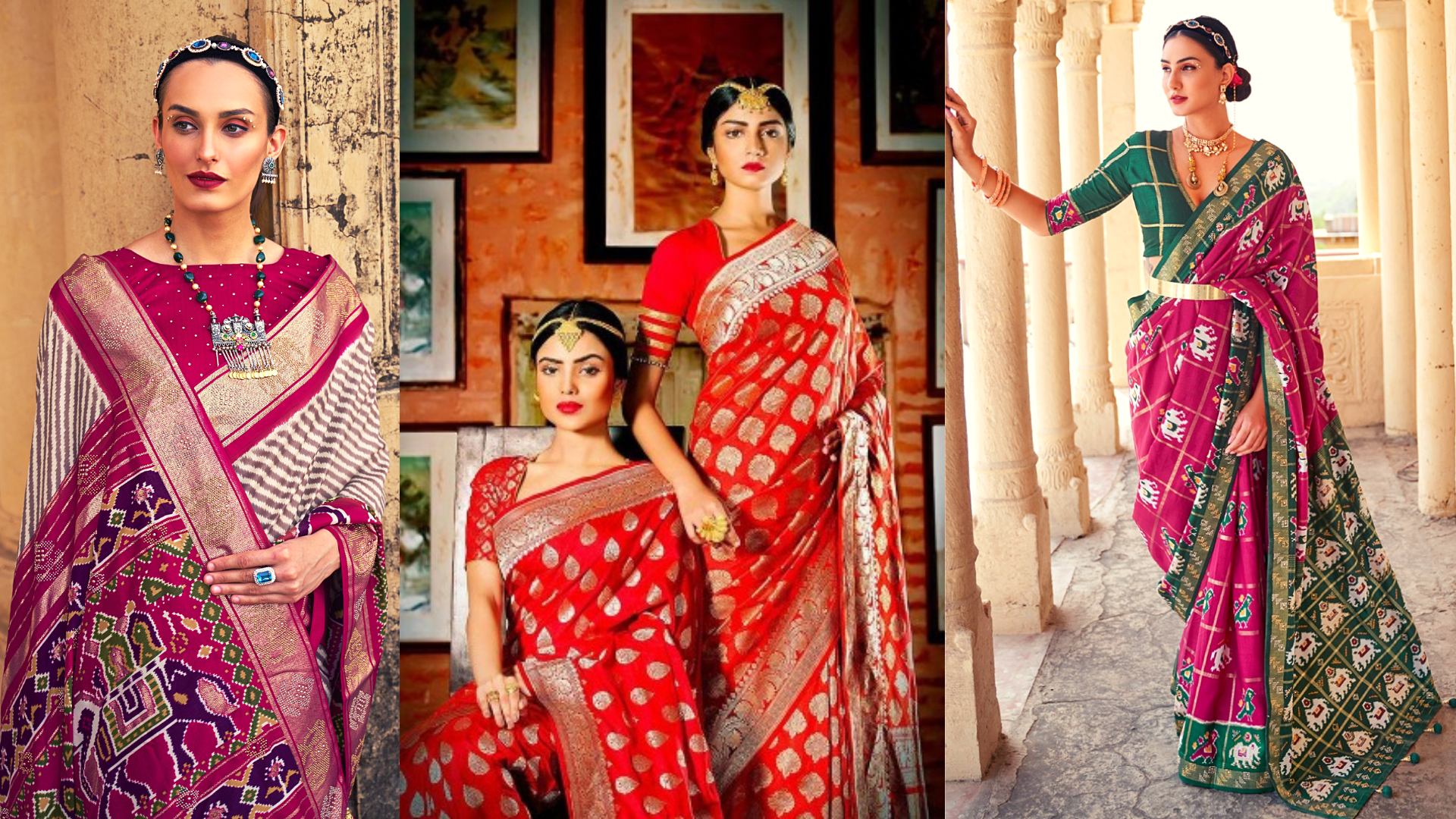
What highlights Indian traditional ceremonies and marriages the most? No matter how many different outfits you have in your closet, searching for the ideal saree will never be sufficient.
In this article, we will be discussing about the Most Popular Sarees In India along with their state of origin, price range, the fabric used and more.
The saree represents the customs and traditions that define our nation. We all adore this unique outfit because of the unmatched elegance of sarees. Almost every woman in the nation loves sarees.
Additionally, if you want to know about the best saree brands in India, I suggest you read our article so that you can opt for the best.
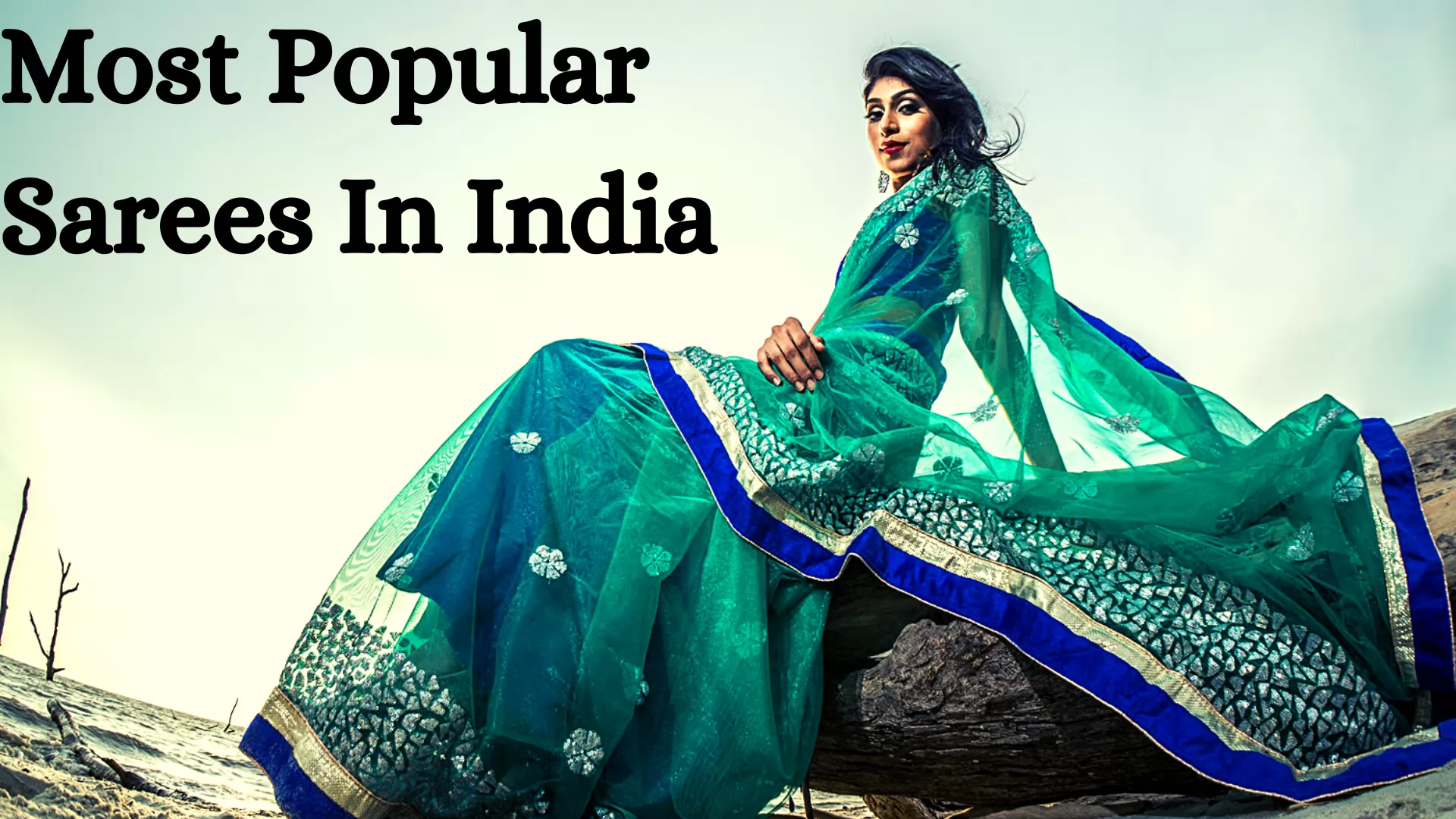
Table of Contents
[ Show ]
List Of Most Popular Sarees In India
Here, we have shortlisted 15 famous sarees in India, along with their state of origin and price range. We have also mentioned each of these sarees in detail below the table. So, to know more about these sarees, go through the article till the end.
Type Of Saree | State Of Origin | Price Range |
| Bandhani Saree | Gujarat and Rajasthan | Rs. 389 - Rs. 18,500 |
| Kanjivaram Saree | Tamil Nadu | Rs. 400 - Rs. 23,000 |
| Banarasi Saree | Uttar Pradesh | Rs. 300 - Rs. 10,000 |
| Bhagalpuri Silk Saree | Bihar | Rs. 380 - Rs. 13,000 |
| Leheriya Saree | Rajasthan | Rs. 400 - Rs. 9000 |
| Nauvari Saree | Maharastra | Rs. 400 - Rs. 18,000 |
| Chikankari Saree | Uttar Pradesh | Rs. 600 - Rs. 20,000 |
| Phulkari Saree | Punjab | Rs. 500 - Rs. 12,000 |
| Patola Saree | Gujrat | Rs. 545 - Rs. 2,30,000 |
| Chanderi Saree | Madhya Pradesh | Rs. 300 - Rs. 50,000 |
| Paithani Saree | Maharashtra | Rs. 600 - Rs. 2,60,000 |
| Kasavu Saree | Kerela | Rs. 599 - Rs. 5,000 |
| Muga Silk Saree | Assam | Rs. 500 - Rs. 80,000 |
| Maheshwari Sarees | Madhya Pradesh | Rs. 449 - Rs. 15,000 |
| Georgette Saree | Rajasthan | Rs. 300 - Rs. 30,000 |
Review Of Most Popular Saree Designs In India
Here we have reviewed each of these most popular sarees in India in detail. So if you are curious to know about these popular sarees in India, keep reading this article until the end.
1. Bandhani Saree
Bandhani sarees are made from loosely woven silk called Georgette or cotton called Malmal. The knots are firmly tied, and the remaining fabric is successively coloured. This leaves the knots undyed, and as a result, a lovely floral pattern can be seen all over the material. The majority of bandhani production facilities today are found in Gujarat and Rajasthan.
This vintage tie-and-dye pattern, rooted in the culturally rich state of Gujarat and Rajasthan, is a superb example of figurative art that complements both traditional and modern dress codes. A significant aspect of the traditional Gharchola saree worn by Gujarati brides is the Bandhani print.
Important Aspect
-
Origin: Gujrat & Rajasthan
-
Price Range: Rs. 389 - Rs. 18,500
-
Fabric: Georgette, Chiffon, Cotton, Malmal
-
Other Products Available: Dupattas
2. Kanjivaram Saree
Kanjivaram sarees, also known as Kancheepuram Sarees, are produced from South Indian mulberry silk and are a trademark of Kancheepuram in South India. The Kanchipuram saree has its roots in the hundreds of years of tradition of weaving sarees in temples. Pure mulberry silk is used to weave Kanchipuram sarees in various colours. These sarees include thick gold weaving with border and pallu in contrasting colours.
A Kanchipuram saree will always feel smooth and soft when carefully rubbed. Rudraksham (expressing Rudraksha beads), Gopuram (indicating temples), Mayilkan (portraying a peacock's eye), and Kuyilkan (reflecting a nightingale's eye) are some of the most well-known patterns seen on Kanchipuram saree borders. The body of the saree and the pallu are woven individually and then sewed together in a traditional Kanchipuram silk saree.
Important Aspect
-
Origin: Tamil Nadu
-
Price Range: Rs. 400 - Rs. 23,000
-
Fabric: Pure Mulberry Silk & Zari
3. Banarasi Saree
A Banarasi sari was created in Varanasi, a historic city called Banaras. The saris are among the best in India, and they are renowned for their luxurious needlework, exquisite silk, gold and silver brocade, or zari. These saris are distinguished by their complex interwoven floral and foliate motifs, kalga and bel, and a string of erect leaves known as jhallar at the outer edge of the border.
Additional characteristics include gold, precise weaving, miniature figures, metallic visual effects, pallus, jal (a design resembling a net), and mina work. The four primary types of Banarasi sari are pure silk (Katan), organza (Kora) with silk and zari, Georgette, and Shattir. They are further split into groups according to the design method, such as Jangla, Tanchoi, Vaskat, Cutwork, Tissue, and Butidar.
Important Aspect
-
Origin: Varanasi, Uttar Pradesh
-
Price Range: Rs. 300 - Rs. 10,000
-
Fabric: Finely Woven Silk
-
Other Products Available: Dupattas, Lehanga, Suit
4. Bhagalpuri Silk Saree
Traditional silk sari designs include those made of Bhagalpuri or tussar silk. The Bhagalpuri sari is a type of sari made from this fabric. Bhagalpur is referred to as India's "silk city." Antheraea paphia silkworm cocoons are used to produce Bhagalpuri silk. High-calibre craftspeople started the tradition of making Bhagalpuri silk sarees 200 years ago. These Bhagalpuri silk sarees differ from art silk sarees due to their distinctive colouring method.
The eponymous natural tussar silk fabric is distinguished by patterned stripes and checks of varied densities and is generally dyed in vivid red, blue, pink, or orange. Bhagalpur's overall silk industry generates about Rs 100 crores each year, with 50% of that coming from domestic sales and 50% from exports. Removing silk strands from cocoons and spinning yarn to create fabric employs about a million people.
Important Aspect
-
Origin: Bhagalpur, Bihar
-
Price Range: Rs. 380 - Rs. 13,000
-
Fabric: Silk
-
Other Products Available: Dupattas, Shawls, Kurtis
5. Leheriya Saree
The traditional tie-dye method known as leheria is used in Rajasthan, India, and produces a vibrantly coloured fabric with unusual patterns. The well-known leheriya pattern carefully depicts the depths of indigo following numerous mud-resistant and dyeing processes while also conjuring the movement of water. Thin cotton or silk cloth suitable for dupattas, turbans, or saris is dyed using leheria.
Leheriya sarees are lightweight and ideal for all ages and seasons. These printed sarees are sometimes edged with laces or dense gota patti stitching to make them suitable for weddings and other celebrations. These drapes are more affordable than most indigenous sarees and have a classic look, making them a favoured part of eco-friendly design.
Important Aspect
-
Origin: Rajasthan
-
Price Range: Rs. 400 - Rs. 9000
-
Fabric: Thin Cotton & Silk
-
Other Products Available: Dupatta & Turbans
6. Nauvari Saree
The name "Nauvari" (which means "Nine Yards") refers to the fact that this sari is typically worn with a single nine-yard cloth. Another name for this type of sari is the "sakachcha sari." Its name, Akanda Vastra, denotes that it is self-supporting and does not require any other clothing.
Cotton Nauvari sarees are typically worn without a petticoat. The "kashta" technique, specific to Nauvari, involves tucking the saree's border at the back. The Nauvari Saree represents bravery because the drape began with Maratha women warriors who wore the saree in a dhoti form, allowing them to ride horses easily and engage in combat.
Important Aspect
-
Origin: Maharastra
-
Price Range: Rs. 400 - Rs. 18,000
-
Fabric: Cotton, Silk & Satin
7. Chikankari Saree
An ancient form of needlework from Lucknow, India, called chikankari. Chikankari is the name for the method used to create chikan works. Chikan is a type of hand embroidery that is delicate and skillfully executed on various textile fabrics, including muslin, silk, chiffon, organza, net, etc. White thread is stitched on pastel hues of light muslin and cotton clothing. Chikankari sarees are beautiful because of their subtle grace.
Many patterns and designs, including muree, lerchi, keelkangan, and bakhia, are used in chikankari embroidery. It features beautiful embroidery that incorporates elements from Mughal architectural themes and patterns. Shadow work is another name for chikankari. It is a sophisticated form of detailed embroidery performed on fabric using only a needle. Extreme care and precision are needed for the needlework to produce attractive patterns and motifs.
Important Aspect
-
Origin: Uttar Pradesh
-
Price Range: Rs. 600 - Rs. 20,000
-
Fabric: Muslin, Silk, Chiffon, Organza & Net
-
Other Products Available: Kurtis, Dupatta, Tops, Lahenga, Dresses, Sherwanis, Chudidaars, Salwars & Skirts
8. Phulkari Saree
Punjabi Phulkari is a traditional embroidery style that produces stunning patterns. Phulkari, which means "flowery craft," is well-recognised for its floral, geometrical, and theme designs. The Punjabi weavers were the ones to invent the saree, and as a result, it features a variety of patterns and local needlework. Various chiffon, chignon, and georgette fabrics are available for phulkari sarees.
Using a darn stitch with coloured silken thread on the back of coarse cotton fabric defines Phulkari embroidery. These sarees are affordable, lightweight, and suitable for formal occasions. These sarees suit pearls, silver, gold, or other jewellery well. The Phulkari sarees are stunning enough to wear casually and at formal events. They go well with any personality, slim or healthy.
Important Aspect
-
Origin: Punjab
-
Price Range: Rs. 500 - Rs. 12,000
-
Fabric: Chiffon, Chignon, Georgette, Art Silk, etc.
-
Other Products Available: Kurtis, Dupattas, Stoles, Salwar Suits, and Juttis
9. Patola Saree
In Patan, Gujarat, Patola is a double-ikat woven saree often made of silk. The warp and weft threads are wrapped to resist the dye in the desired pattern for the woven cloth to make a patola sari. This tying is repeated for each colour to include each colour in the finished fabric. Double ikat is the term for dyeing the warp and weft before weaving. Patola sarees are characterised by geometric patterns with traditional motifs and vibrant colours. Each Patola saree is unique by nature and displays the weaver's talent and creativity.
Due to their unique nature and distinctive abstract and geometric patterns, patolas are easily recognised from a distance. Elephants, human figures, kalash, paan, parrots, and patterns influenced by Gujarat's stunning architecture can be found there. The most beautiful and long-lasting handcrafted sarees are patola sarees. The Double Ikat technique ensures that once artists have woven fabric, the two sides' colour, feel, design, and appearance blend together. One can wear it on both sides because of its distinctive weaving techniques.
Important Aspect
-
Origin: Gujrat
-
Price Range: Rs. 545 - Rs. 2,30,000
-
Fabric: Silk
10. Chanderi Saree
A traditional sari manufactured in Chanderi, Madhya Pradesh, is known as a Chanderi sari. Three types of cloth are used to make Chanderi saris: pure silk, Chanderi cotton, and silk cotton. Several Chanderi patterns incorporate traditional currency, floral art, peacocks, and contemporary geometric designs. The saris are among the best in India, and they are renowned for their luxurious needlework, exquisite silk, and gold and silver brocade, or zari.
Chanderi fabric is lightweight and has a sheer texture and glossy transparency. The best time to wear clothing made of Chanderi fabric is when it's hot outside. Silk and golden zari are woven into cotton yarn to create chanderi material, which has a shimmering quality. Fabric made from chanderi silk is renowned for its exquisite texture, transparency, and excellent use in art and design. The Chanderi fabric's buttis and motifs are hand-woven using needles and a handloom.
Important Aspect
-
Origin: Madhya Pradesh
-
Price Range: Rs. 300 - Rs. 50,000
-
Fabric: Pure Silk, Chanderi Cotton & Silk Cotton
-
Other Products Available: Kurtis, Tops, Chudidaar, etc.
11. Paithani Saree
A silk and zari sari is known as a paithani. It has a plain weave and weft figure patterns that follow tapestry-related ideas. Historically, Paithanis featured a coloured cotton muslin background with significant additional zari patterning. However, silk was also weaved in the 19th century. Borders with an oblique square pattern and a padar with a peacock motif are features of Paithani. There are both plain and spotted styles available. Single-color and multi-coloured patterns are also common variations. By utilising one hue for weaving lengthwise and another for weaving widthwise, the multi-colour appearance is produced.
Important Aspect
-
Origin: Maharastra
-
Price Range: Rs. 600 - Rs. 2,60,000
-
Fabric: Silk & Zari
12. Kasavu Saree
The Kerala handloom method known as Kasavu involves weaving very fine gold or silver threads to create border patterns and decorations on silk and cotton fabrics. Later, most India adopted this technique, and the Kasav technique was created for various other materials. The Kasavu saree is an emblem of Keralan heritage and culture.
The Kerala saree, now popular as the first form of use of the Kasav method, is thought to be a piece of white or off-white cotton fabric with Kasav borders that originated in the South Indian state of Kerala. The border and the plain weave are the only distinguishing features of the minimalist Kerala saree pattern. The highlight of this understated saree is the golden border.
Important Aspect
-
Origin: Kerala
-
Price Range: Rs. 599 - Rs. 5,000
-
Fabric: Silk & Cotton
13. Muga Silk Saree
Muga silk is a wild silk type geographically associated with the Indian state of Assam. A Muga Silk saree has a natural yellowish-golden colour, and a shimmering, glossy texture and is renowned for its remarkable durability. It was formerly only available to royalty. After bleaching, a Muga silk saree can be coloured. This saree can be hand-washed, and each wash brings out more of its lustre.
It absorbs moisture better than other silks, making it more comfortable to wear. Muga silk, which is uniquely found in Assam, has earned the nickname "Golden Silk of Assam" due to its golden hue. It is the cosiest cloth that is also resistant to fungus, dust, and other irritants. Muga fabric reportedly has the greatest tensile strength of any natural silk.
Important Aspect
-
Origin: Assam
-
Price Range: Rs. 500 - Rs. 80,000
-
Fabric: Silk
14. Maheshwari Sarees
The Maheshwar town of Madhya Pradesh is where Maheshwari sarees get their name. These Indian regional sarees have priceless artistic treasures that speak to their historical significance. The handloom-woven silk and cotton fabric used to create Maheshwari sarees is renowned for its silk content. They are embellished with striped, checkered, and flowery brocade patterns.
Patterns of the mat, brick, diamond, and jasmine flower are among the famous Maheshwari saree designs. There are five different Maheshwari saree variations depending on the designs. Whereas Chandrakala and Baingani Maheshwari sarees have plain colours, Beli, Chandratara, and Parbi Maheshwari sarees include stripes and checkered designs.
Important Aspect
-
Origin: Madhya Pradesh
-
Price Range: Rs. 449 - Rs. 15,000
-
Fabric: Silk & Cotton
15. Georgette Saree
Georgette sarees are renowned for their elegance and ease of draping. These sarees may be recognised for being produced of fabric due to their translucent, crinkled surface. Twisted yarns made by giving a crinkle texture to the surface are used to weave the cloth. Such sarees are breathable and comfortable to wear for a long time.
Georgette is often manufactured from pure silk and synthetic fibres like polyester and rayon, much like crepe fabric. One of the most often used textiles for printing, it is sturdy and tear-proof, easily dyed in any shade, and easy to print on. Everyone loves experimenting with Georgette, a flexible fabric frequently offered in stunning massive floral patches, various designs, and even in solid colours.
Important Aspect
-
Origin: Rajasthan
-
Price Range: Rs. 300 - Rs. 30,000
-
Fabric: Pure Silk, Polyester & Rayon
Conclusion
This was all about Most Popular Sarees In India. I hope you have received all the information regarding this after going through this article. We have tried providing you with each minor details. However, if you still have any queries, feel free to ask them in our comment section and we will try to respond to your queries as soon as possible.
Frequently Asked Questions
Q. Which is the most famous saree in India?
A. The Banarsi saree is one of the most well-known varieties of saree among those of various states. These silk sarees, which come all the way from Varanasi, are renowned for their designs and themes.
Q. What is the famous traditional saree?
A. Kanjeevaram wedding saris, Banarasi wedding saris, Sambalpuri wedding saris, Assam silk, gota saris, Resham saris, Zardosi saris, paithani saris, Bomkai saris, bandhani saris, and neriyathum saris are some examples of popular traditional wedding saris for Indian women.
Q. Which type of saree in trend 2023?
A. An organza saree is going to be a mainstay in your wardrobe by 2023. The current fashion trend of colour blocking has even made its way into sarees, where it is worn in a number of ways.
 Advertise with Us
Advertise with Us 100% Cashback
100% Cashback

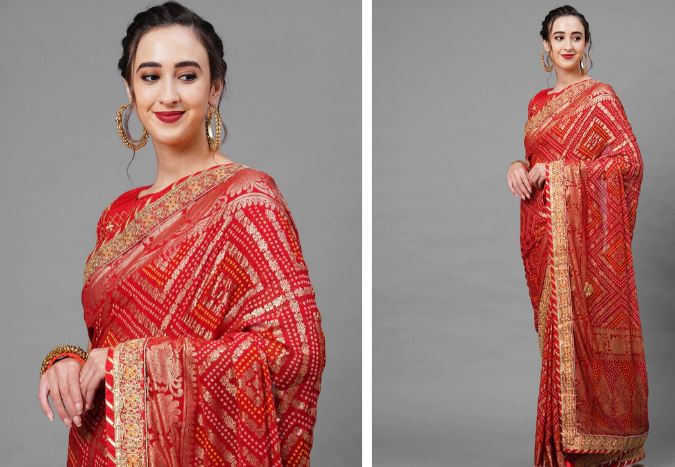
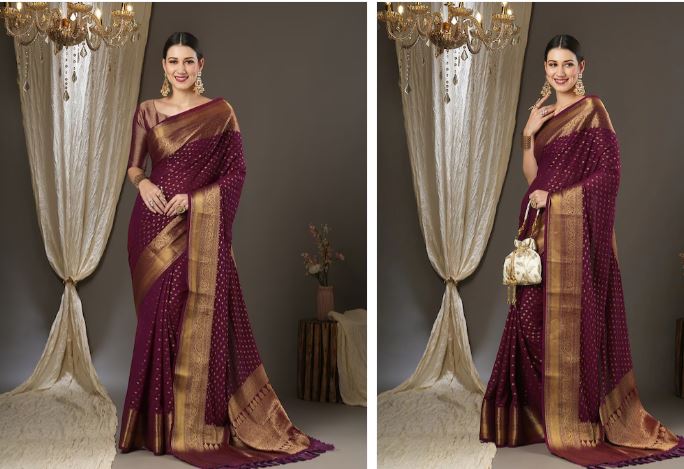
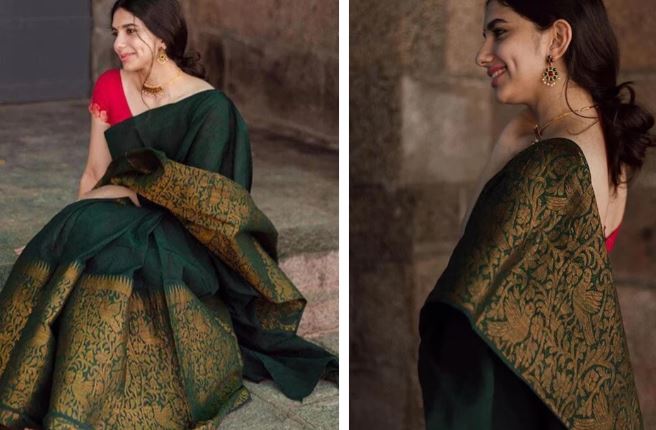
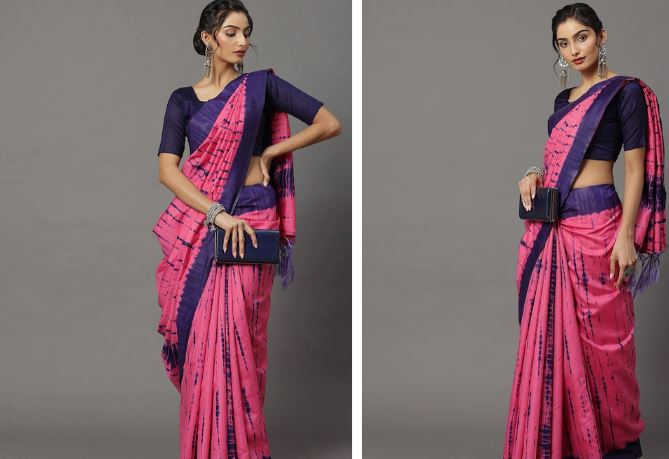
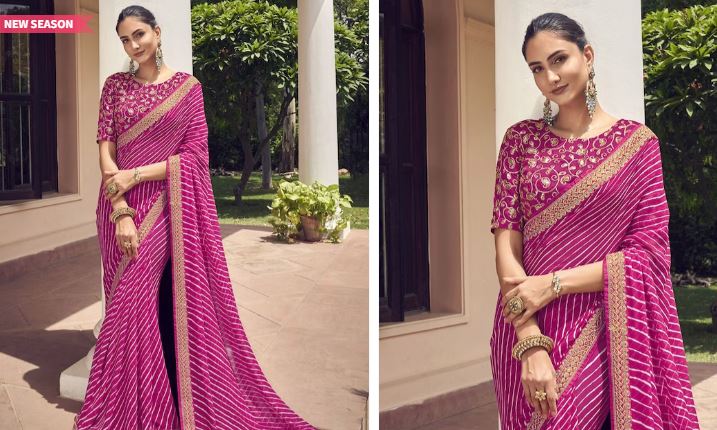
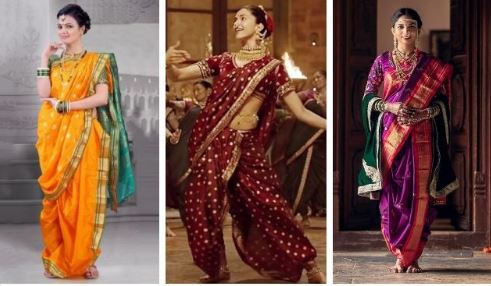
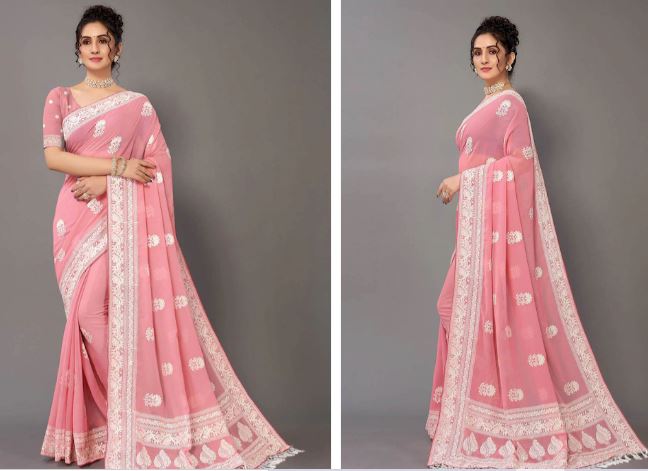
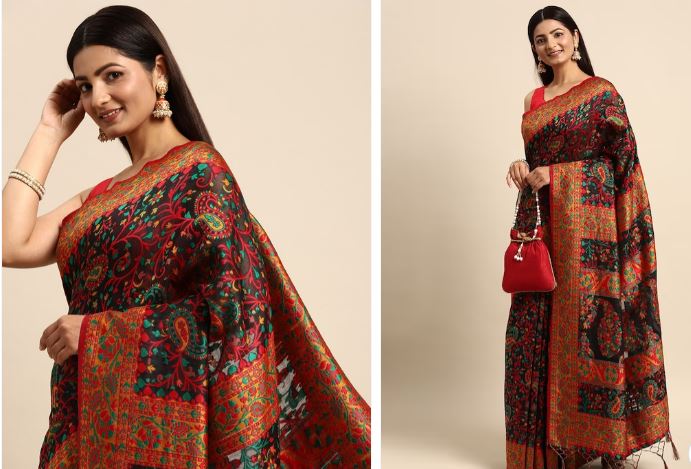
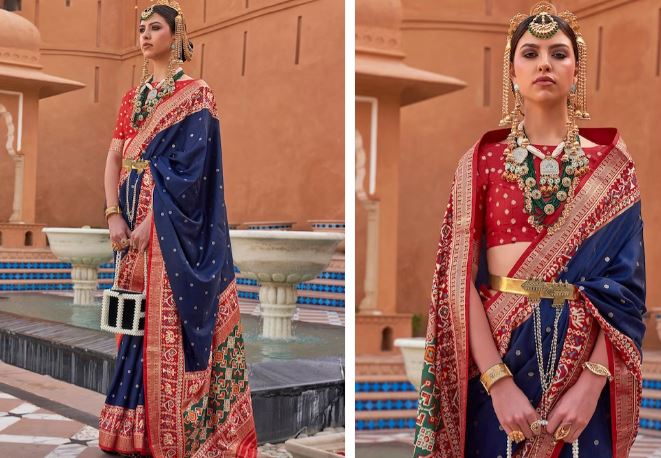
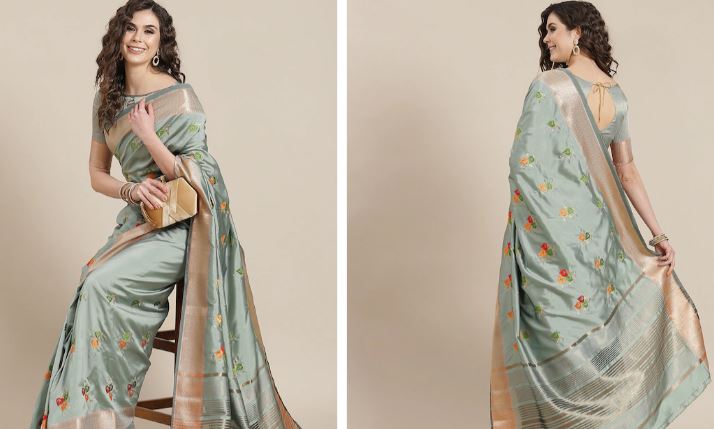
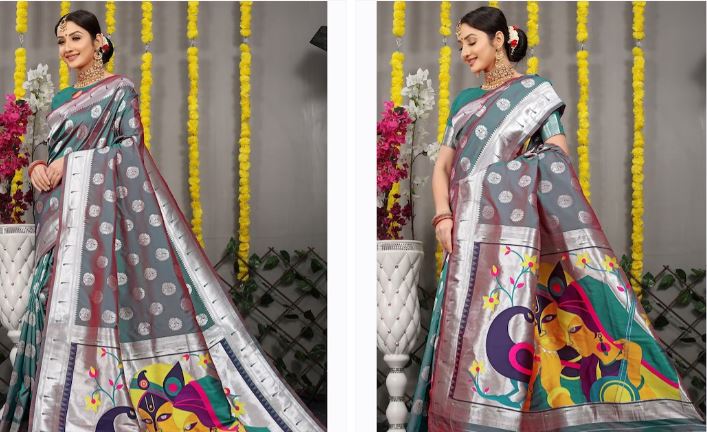
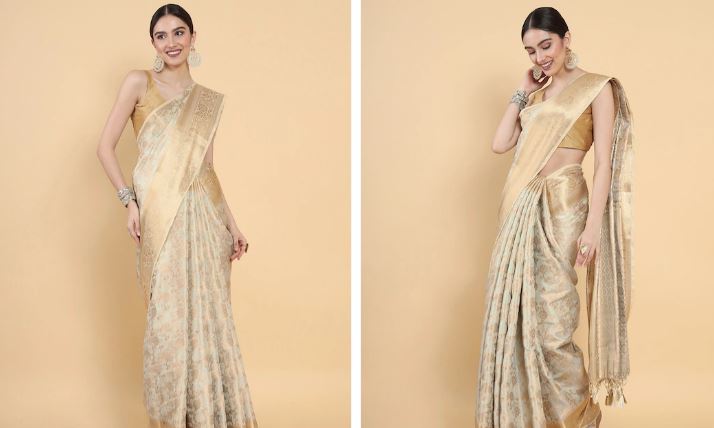
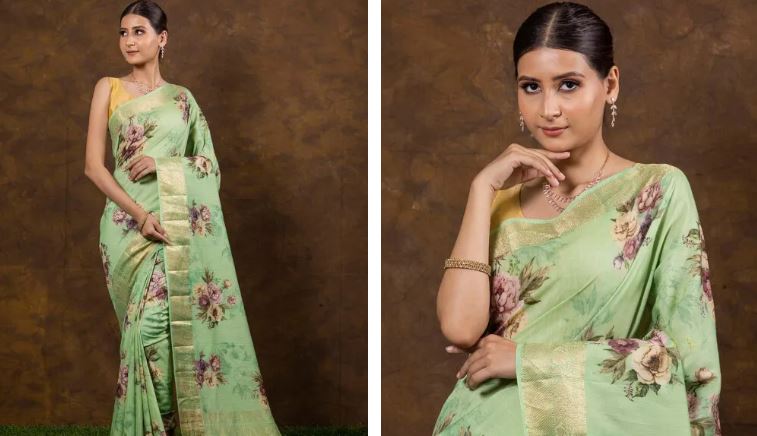
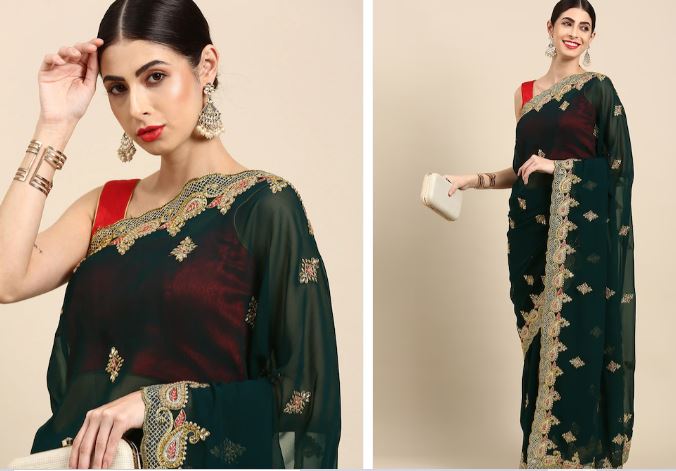


0 Comments
Login to Post Comment